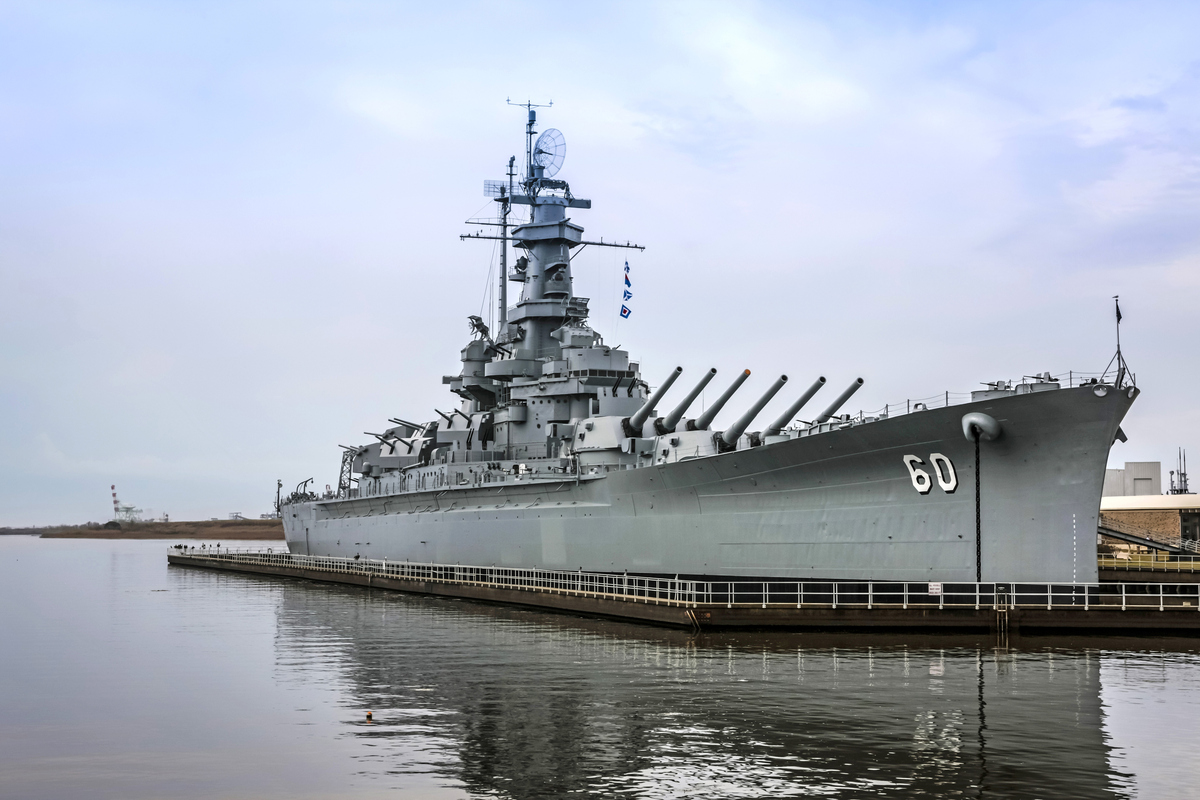In its heyday, the USS Alabama was one of the fastest battleships of the United States Navy. Built in the 1930s, she was 680 feet long and had a top speed of almost 32 miles per hour. The ship had quite a number of big guns and saw plenty of action during the Second World War.
Among others, she escorted the British Fleet on the Murmansk Run to deliver equipment, fuel, and food to Russia after the latter was invaded by Germany in 1941. In August 1943, the Alabama joined the Pacific Fleet where it shot down 22 Japanese planes and was the first to detect enemy bombers in the Battle of the Philippine Sea.
After the war, plans to modernize the ship failed and she was scheduled for disposal in 1962. She was saved from oblivion when the state of Alabama raised $800,000 to convert the ship into a museum.
Repairing a piece of history with marine coatings
But that was easier said than done. Before the Alabama could open its doors to the public in 1965, the ship had to be repaired and repainted — a mean feat that required the best marine coatings.
Marine coatings are waterproof, protective paints applied to surfaces that are exposed to or immersed in fresh, brackish, or saltwater. Unlike ordinary house paints, these paints are more expensive because they are designed specifically for boats, ships, tankers, and marine structures like offshore oil rigs. There are four types:
1. Topside paints
These are applied to the areas above the waterline, namely, the upper hull, interior, and deck areas of a boat. They protect the boat from the sea, sun, and sand, and minimize scratches that appear over time. The three types of topside paints are one-part polyurethane, two-part polyurethane, and alkyd enamel. All are resistant to moisture and abrasion, can withstand hull expansion and contraction, and can prevent UV damage.
2. Bottom paints
Also called antifouling paints, bottom paints protect a vessel below the waterline. They keep harmful organisms like barnacles, weeds, and slime from building up on the hull’s outer surface. Aside from being unsightly, these things can slow down a boat, waste fuel, and eventually damage the hull. Bottom paints destroy or keep these organisms at bay.
3. Deck paints
Boat decks are slippery when wet, which can be dangerous to both crew and passengers. Deck paints prevent accidents caused by slippery floors, protect the area from the elements, and reduce wear and tear.
4. Tank paints
These protect the linings of cargo tanks, potable water tanks, and wastewater tanks from costly damage. Common paints under this category are epoxy, polyurethane, or polyurea. They are made to withstand the cargo without contaminating it.
While not many boats are made nowadays, the ones we have are lucky because of the protection offered by marine coatings. With better products in development aimed at reducing maintenance costs and increasing fuel efficiency, our vessels are in good hands.
And what about the Alabama? Thanks to a great paint job, this warship continues to attract visitors at Battleship Memorial Park in Mobile Bay. A lot of work went into rehabilitating this vessel, and Mobile Paint Manufacturing Company is proud to be a part of it. Our tough marine paints were used to preserve this important piece of American naval history, so you can expect the same results with your vessel — whether it’s a canoe, yacht, or battleship!
Since 1921, Mobile Paint Manufacturing Company has been providing boat owners in Theodore, Alabama with marine coating solutions to beautify and protect their investments. To learn more, get in touch with us today.

